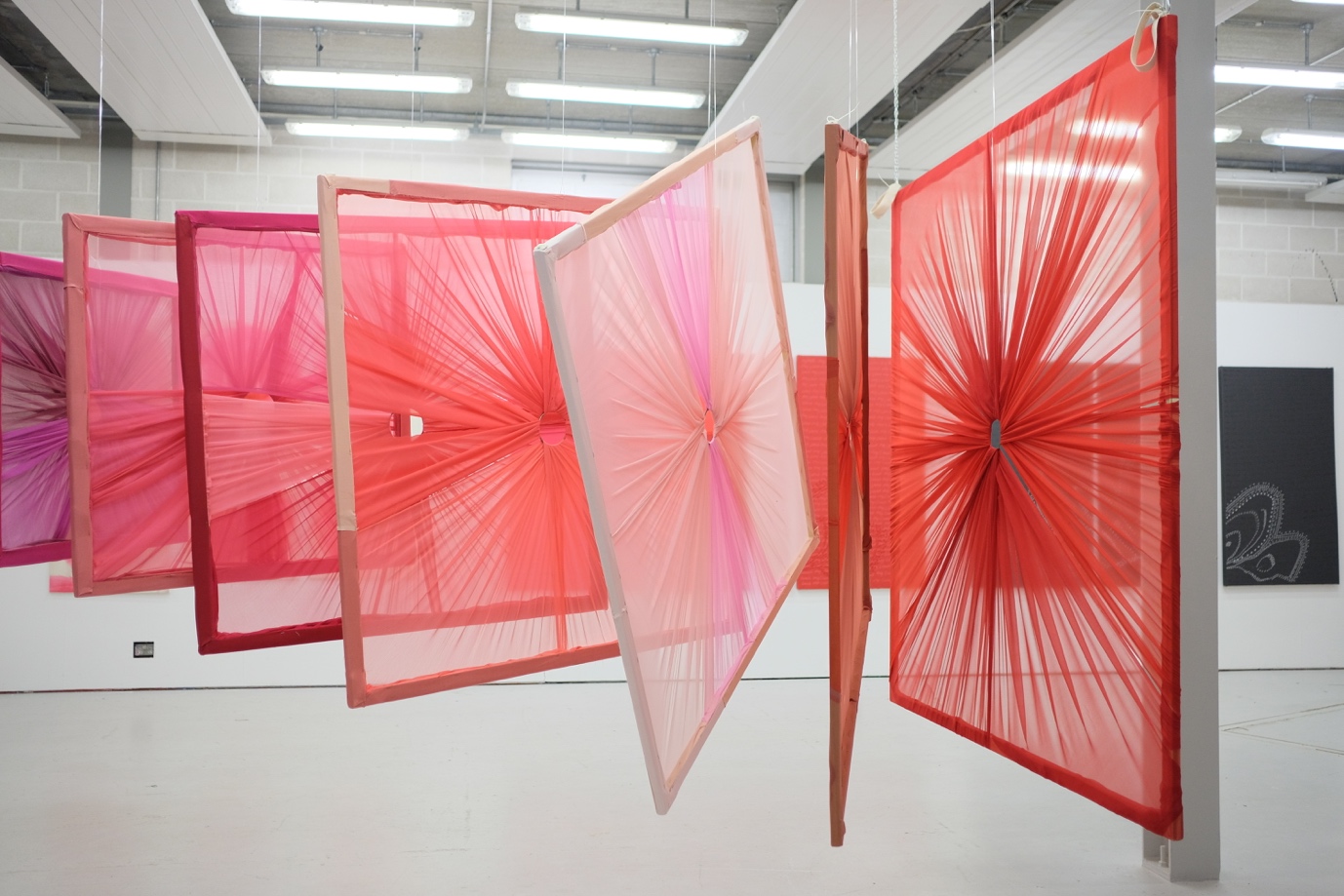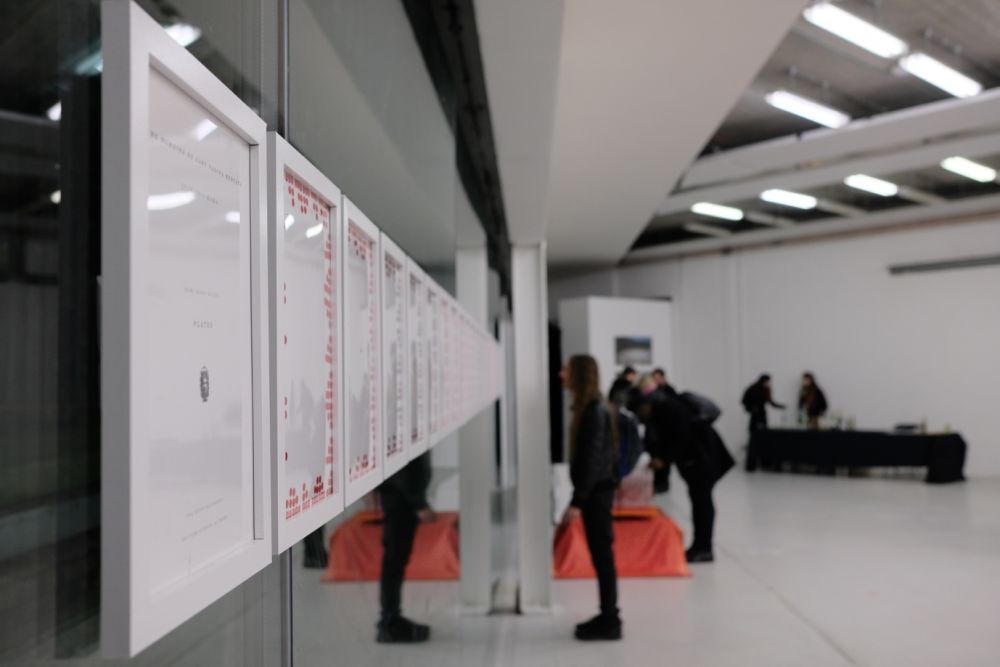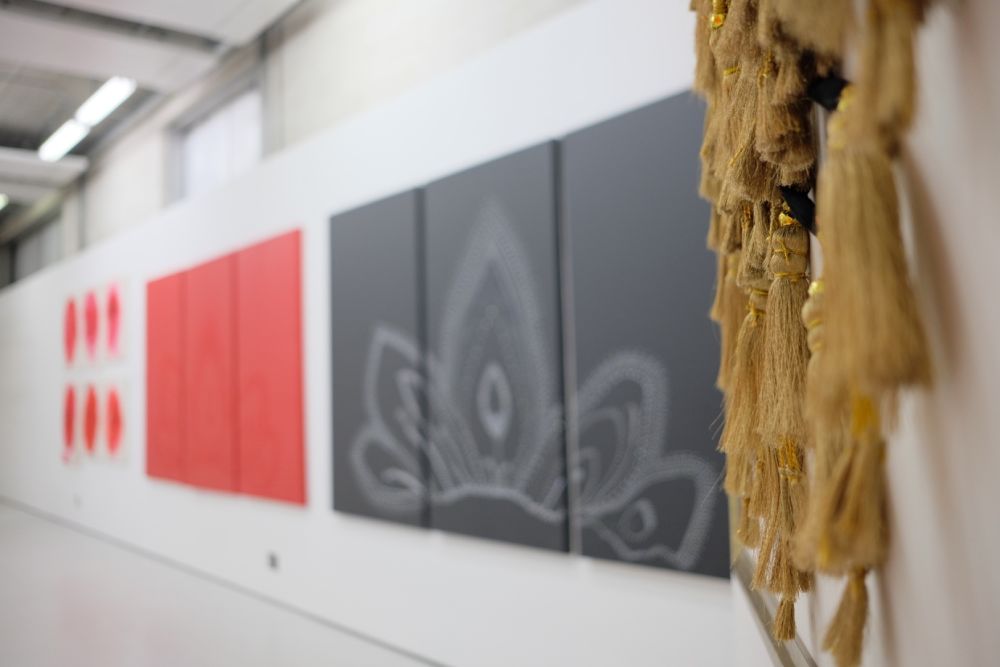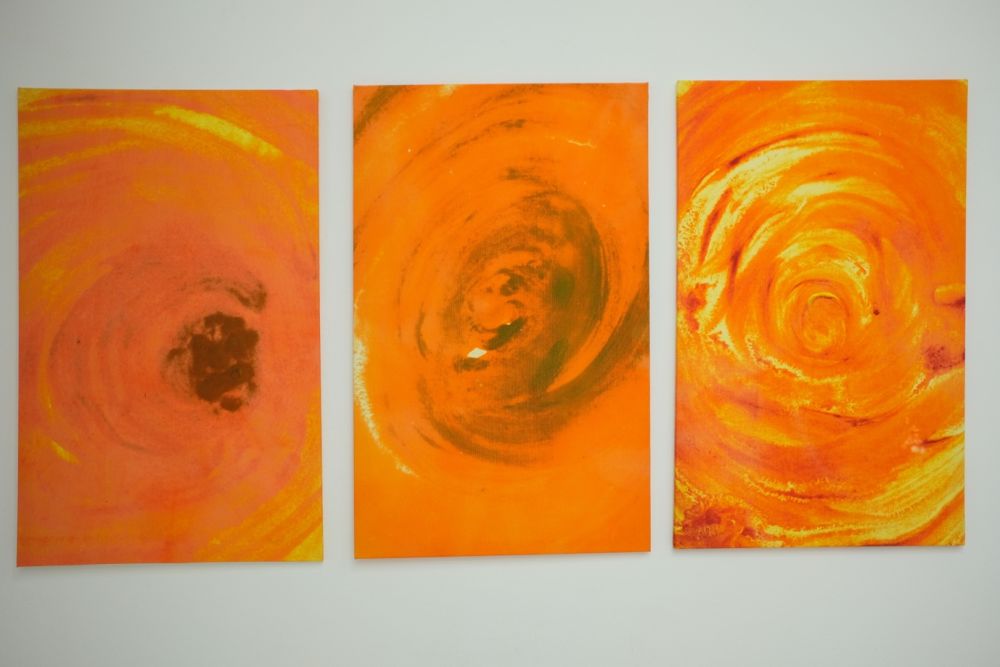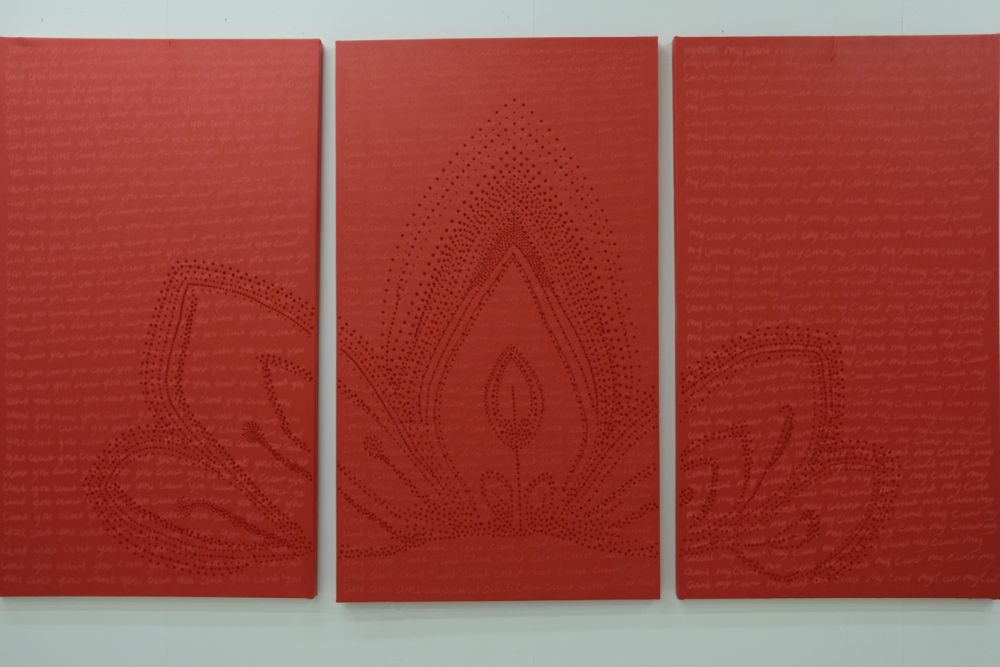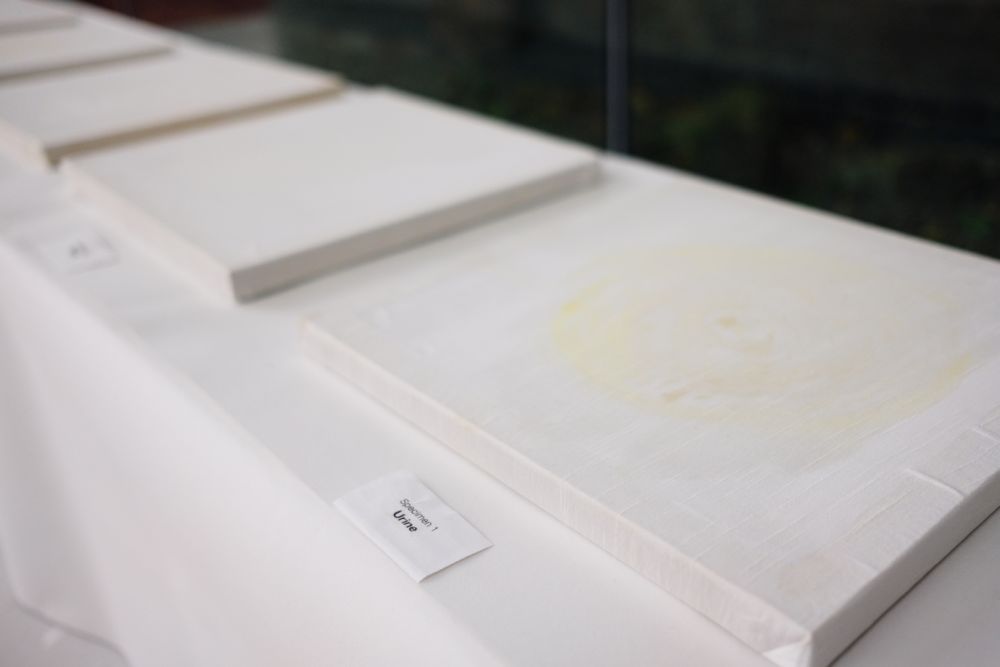The Post-Grad Community Project Fund makes funds available to UAL postgraduate students to organise events, projects and cultural interventions that bring together postgraduate students from different disciplines, courses and colleges.
During the week of 28 October to 1 November 2019, Holes, by Remi Rana Allen, was exhibited at The Triangle Space, Chelsea. At least two hundred people viewed the exhibition during the course of the week.
The project responded to the funding theme 'Resilient Communities'.
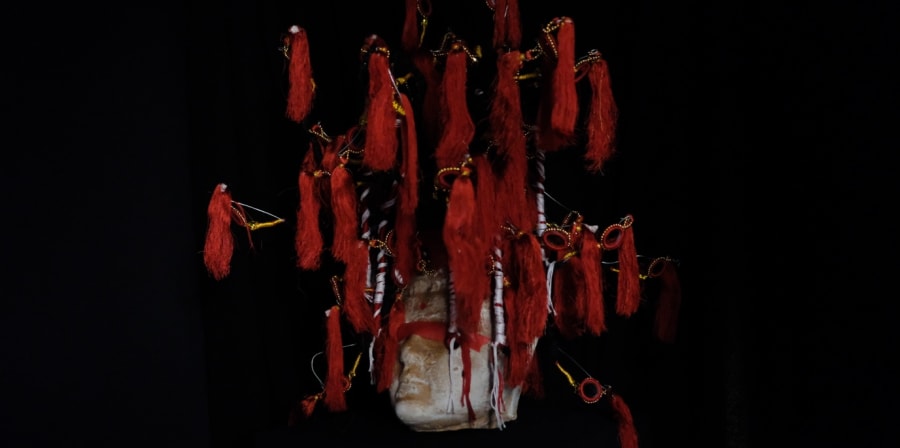
“I think in English, I appear Indian” (2017)
My purpose through art practice and research has been to inform as a cultural insider, the complex layering of the female British Indian hybrid identity. Through the use of female adornments worn for generations by Indian women, and site-specific materials, I create art that blurs the boundaries of both East and West, by fusing the materials, I hope to evoke discussion surrounding the British Asian female identity. This seems especially relevant in the current socio-political climate.
Holes allowed me to politicise the non-white female identity, this has always been my intention through my practice. I aim to shatter stereo types of the Asian female, and to create discourses on the history, suffering and regeneration of the Indian female. The Indian female positively perceived as an empowered, autonomous, contemporary British feminist.
My practice has mirrored the layering and the repetition of uncovering yet another facet of who I am. The materials become the tool that represents the layering and repetition, exhibiting another facet of my practice. The materials I ‘find’ are often related to site. The materials that I ‘select’ are very much a part of my Indian cultural heritage. They are specifically sourced from the ‘homeland’. They travel and make their own journey to the place I call home - England.
My materials represent the coded visual identifications of the Indian female. The ‘bindi’ or ‘Kum Kum’ (red dot), are indicators of marriage, of warding off evil spirts and of protection through the third eye chakra. Without questioning these codes of dress, they are sub-consciously acknowledged each day by millions of Indians - a natural acceptance of what they represent. These codes of dress are ingrained within the sartorial existence of Indian society, they become ‘invisible’ to the Indian. However, if you remove that one red dot from its natural habitat and place it upon the face of the west, what does that symbolism start to represent? This is what has instigated the making of many of my artworks. The mixology of Indo-European. I view myself as a western face. If the bindi is placed upon my forehead, it doesn’t appear alien to the Indian. My face is accepted as Indian, married, and protected. Whereas, to my white peers, the bindi upon my forehead somehow ‘visibly’ appears alien. Perhaps it alienates them from my western self. Or is it, that I now appear alien because I no longer represent their version of my western ‘self’? The self I present to them on a daily basis. There seems to exist an uncertainty, of who I am. I believe the fluidity of my visual identity has exposed the hybridity of another or other self that appears Eastern, Indian, nonwhite. Not English.
Independent Holes review from journalist and author Joel McIver
Few collections of art manage to address multiple themes as expertly as Remi Rana Allen’s Holes exhibition, held at Chelsea College of Art in the autumn of 2019. With vision, a broad range of techniques and a degree of courage which many of us would fail to match, the Buckinghamshire-based artist explores modern perspectives on gender politics, sexual mores and the complex intersections of culture, language, nationality and identity.
Holes offers the viewer an emotive experience fueled by Allen’s personal history and redemption from personal trauma. As she explains, “My practice mirrors the slow dilution of my cultural heritage as it seeps further from my grasp,” an evolving journey that seeks to investigate, and ultimately define, British-Asian female identity.
If all this sounds intimidating, think again. Although Holes tackles life’s biggest and darkest subjects – the psychology of sex and the fragility of life among them – the artworks are bound inextricably to a defiant, irreverent sense of humour. This is immersive art to be enjoyed and cherished, not simply seen, and as long as you keep an open mind – perhaps with your own mental Holes ready to be explored? – you will walk away with expanded horizons.
Joel McIver. The Guardian, The Quietus.
Report
I met with many attendees to discuss the artworks. Several Post Grad students also contacted me to arrange future discussions regarding my research. They felt that my research was relevant to their personal research. The researchers were from Royal College, Chelsea, LCF, CSM and National Film School.
I met with BA and MA students who have asked for mentoring sessions to progress their personal projects. I have also had the privilege of listening to feedback from students who have felt a strong connection to my practice and research, in particular some have thanked me for exhibiting art that is an integral part of their personal histories and cultural heritage.
The main aim with my research and art practice has always been to inform as a cultural insider, the complex layering of the British Indian hybrid identity. I feel this was successfully relayed during Holes. From the feedback, Holes gave strength and resolve to many practising ‘Brown’ artists to move forward with their art without fear of being cast as excluded outsiders. One of the real pleasures of exhibiting my art practice was viewing attendees from various cultural backgrounds and their perceptions of what my art encompassed. Without having to explain the materials involved in making the art, feedback from viewers of an Asian heritage – was that they instantly recognised and connected with the materials. They appreciated the way I had used the female adornments to create art. It has always been my intention to use these materials to politicise the non-white female identity. To shatter stereo types of the Asian female, and to create discourses on the history, suffering and regeneration of the Indian female. An empowered, autonomous, contemporary British feminist. Due to the Artist tour and discussion running overtime, BLAME – Brown Leaders and Makers Exist was not launched. Something that became apparent during the Holes exhibition was that there is definitely a space for BLAME within the setting of an art school institution. Positive comments from current undergraduates, post grads and staff expressed perhaps an official launch to the interest group.
Gallery
Remi Rana Allen is a PhD student at Chelsea College of Arts. Having 22 years experience in the graphic design industry her love of minimalist imagery and typography also features in her practice. Present research and studio work investigates Anglo-Indian identities.
More about the Post-Grad Community Project Fund
The Post-Grad Community Project Fund makes funds available to UAL postgraduate students to organise events, projects and cultural interventions that bring together postgraduate students from different disciplines, courses and colleges.
These funds are open to all current postgraduate students at UAL including taught and research students:
MA, MPhil, MRes, MSc, PGDip, PGCert, PhD and Early Career Researchers.
Proposals are encouraged to respond to one of UAL’s 4 identified research themes, enabling students to become active participants in UAL’s research culture. Projects must not be a part of an individual/groups assessed course work.
- The regular Project Fund award is up to £300, with a deadline each term.
- The EXTRA Project Fund awards of £500 - £1,000 are available only in the spring term, to enable more ambitious projects.
Find out more about the fund
Related Links:
- Post-Grad Community Project Fund
- Remi Rana Allen's Mead PhD Rome Residency Report
- BLAME Interest Group
